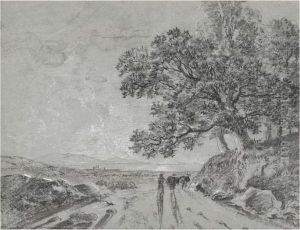Jacques-Henri Sablet Paintings
Jacques-Henri Sablet was a Swiss painter born in Morges, Switzerland, on January 27, 1749. He was part of a family of artists, which included his brother, François-Gédéon Sablet, who was also a painter. Jacques-Henri's early life was marked by his move to Paris, France, where he sought to establish his career in the arts. During his time in Paris, he became associated with the French Academy, although he never gained full membership. His work was influenced by the neoclassical style, which was predominant at the time, reflecting the shift in artistic tastes towards classical simplicity and harmony.
Sablet's career flourished in the late 18th century, a period characterized by significant political and social upheaval due to the French Revolution. Despite the turbulent times, he managed to secure commissions and continued to work on his art. He was particularly known for his portraiture, capturing the likenesses of many notable figures of his era. His portraits are celebrated for their attention to detail, nuanced use of light and shadow, and the ability to capture the personality and essence of his subjects.
In addition to portraiture, Sablet also explored genre painting, depicting scenes of everyday life with a keen eye for detail and a sensitive portrayal of his subjects. His works in this area reflect the broader trends in European art, moving away from the grand historical and mythological themes to focus on more intimate and personal subjects.
Jacques-Henri Sablet's contribution to the art world was cut short by his death on January 11, 1803, in Paris. Although he died relatively young, his legacy lived on through his impactful works. Today, Sablet is remembered as a talented artist who navigated the complexities of his time with skill and sensitivity. His paintings continue to be admired for their technical proficiency and emotional depth, offering a window into the world of late 18th-century Europe.












